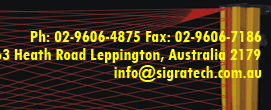
Anti-repeat
If a light curtain on a machine is obstructed, the machine will stop. If
the obstruction is removed from the curtain, the machine must not immediately
re-start, unless you give it a signal to do so.
Like-wise, if you must hold down a foot-pedal for the machine to operate,
the machine must not re-start, when the light curtain has been obstructed and
cleared, until the pedal is released, then pressed again. These functions are
called anti-repeat function, and this can be easily achieved with the reset
terminals on the CL system controller.
|
Valve Monitoring
When a light curtain on a machine is obstructed,
it stops the machine by removing power from whatever is causing the machine to move.
For instance, if a pair of solenoid valves is being used to supply fluid to hydraulic
cylinders, the curtainís output relays would de-energize the solenoid valves to close
the flow to the cylinders to stop the dangerous motion. These sorts of valves have
limit switches attached so that we can monitor whether the valve is open or closed.
These switches can be connected into the CL system reset circuit and be monitored.
If one of the valves does not close when called upon, the CL system will detect
this failure and prevent the other valve from re-opening until the fault is rectified
|
Muting..
The mute function of a light curtain is used when it is necessary for an obstruction
to be ignored by the light curtain, for example, during the safe opening stroke of
a press or guillotine. This would allow the operator to remove a finished workpiece
from the machine before the the machine had actually stopped. This allows faster,
yet safe production. |
Applications ideas
- Presses Folders Guillotines,
- Robots Palletiser Depalletisers
- Conveyors Rollformers Die-cutters
- Slitters Filter presses Extruders
- Pallet wrappers Filling carousels
- Pressure mat-replacement
- Carton folders/gluers
|
Risk analysis
This section is very important but fairly simple. An assessment basically
determines what is the worst possible injury that a machine could inflict
on the operator, how often the operator is exposed to this chance of injury,
and the possibility of avoiding the injury. From this assessment we decide
on the type, positioning, and category of guarding required, as well as the
interface to the machine. For the specific details of how to perform a risk
assessment, refer to AS4024.1, 1996
|
|
|




